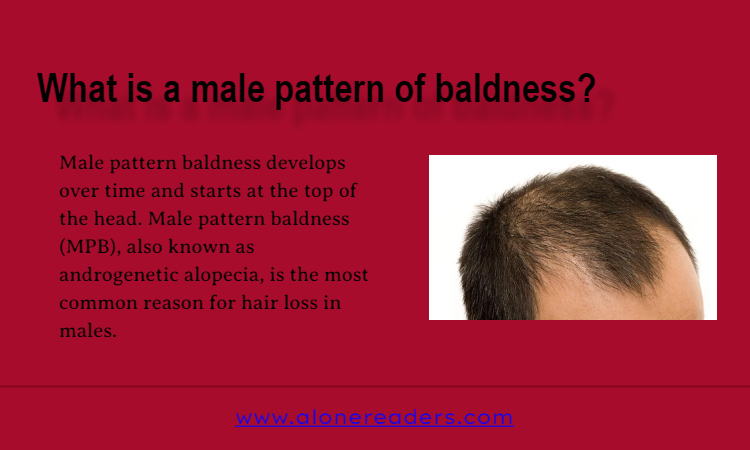
Male pattern baldness develops over time and starts at the top of the head. Male pattern baldness (MPB), also known as androgenetic alopecia, is the most common reason for hair loss in males. It starts as a bald patch or receding hairline on the top of the head and spreads over time to the sides and back of the head. According to the American Academy of Dermatology (AAD), the factors that cause this form of hair loss can also result in hair thinning, where the diameter of the hair grows smaller.
Males of all ages are susceptible to male pattern baldness. By the age of 35, two-thirds of American males will have some degree of hair loss due to MPB, and about 25% of men start the process before they turn 21.
However, the majority of hair loss in males can be attributed to genetic and hormonal factors. People can lose their hair for a variety of reasons, including severe illnesses, adverse drug reactions, and in rare cases, extremely stressful events. The precise mechanisms underlying male pattern baldness, however, are not fully understood, and it is probable that there are multiple causes.
Individuals with MPB frequently have genes that make their hair follicles extremely susceptible to the byproduct of testosterone, dihydrotestosterone (DHT). A tiny portion of the body's testosterone is converted into DHT by an enzyme known as Type 2 5-alpha-reductase, which is present in many body tissues including hair follicles. DHT appears to be most toxic to hair cells near the temples, mid-anterior scalp, and hairline. The balding scalp may also contain more DHT than the non-balding scalp overall.
Hair follicles' androgen receptors are bound by DHT, shortening the follicles' life periods and making them smaller. These hair follicles eventually stop growing hair.
It's possible that hair follicles in balding scalps have more androgen receptors than hair follicles in non-balding scalps. The risk of MPB may also be increased by certain genetic variations in the androgen receptor (AR) gene, which may raise the sensitivity of hair follicles to the effects of DHT. Genetic differences in the AR gene may also influence the age at which MPB begins.
Additionally, it has been discovered by researchers that testosterone receptor disruption in the head may cause blood vessels that feed hair follicles to weaken. This may lead to a decrease in the oxygen and nutrients required for hair development.
Many different at-home remedies, such as over-the-counter and prescribed medications, can be used to solve hair loss:
When hair loss first starts, over-the-counter minoxidil (brand name Rogaine) can be helpful. When using this medication, many people experience some regrowth, but it may take six to twelve months to see the effects. When combined with another therapy, such as microneedling, which makes tiny punctures in the skin using tiny needles, minoxidil seems to be especially effective.
Microneedling can stimulate the growth of hair follicles and make it possible for topical medications like steroid creams to penetrate the lower layers of the scalp.
Additionally, prescription drugs like finasteride (brand name Propecia) can promote hair development. But unlike minoxidil, this drug bears a risk of adverse effects, including reduced libido and changes in cognition, including brain fog.
Corticosteroid injections into bald spots, hair transplants, and platelet-rich plasma therapy are other methods used to regrow hair. The latter involves injecting blood plasma into the region experiencing hair loss. Particularly because it bears a low risk of severe side effects, platelet-rich plasma therapy is regarded as a safe and effective alternative to hair loss medications.